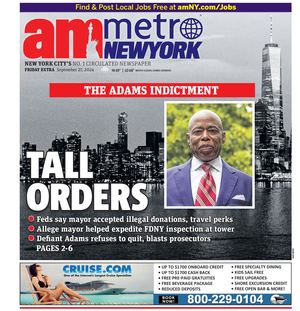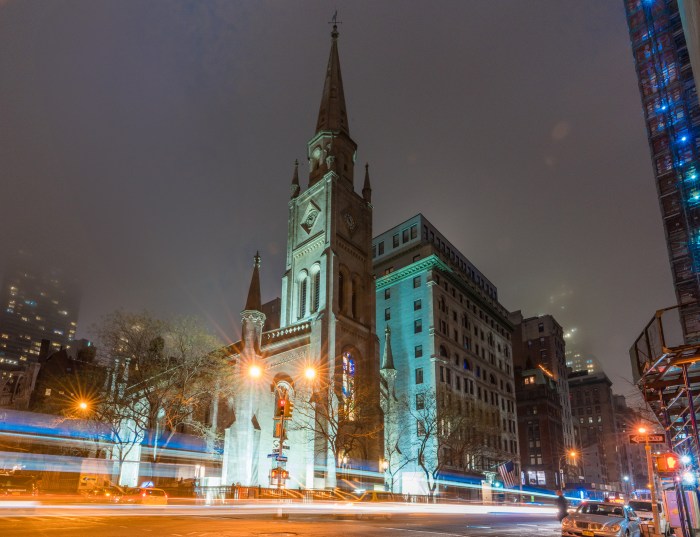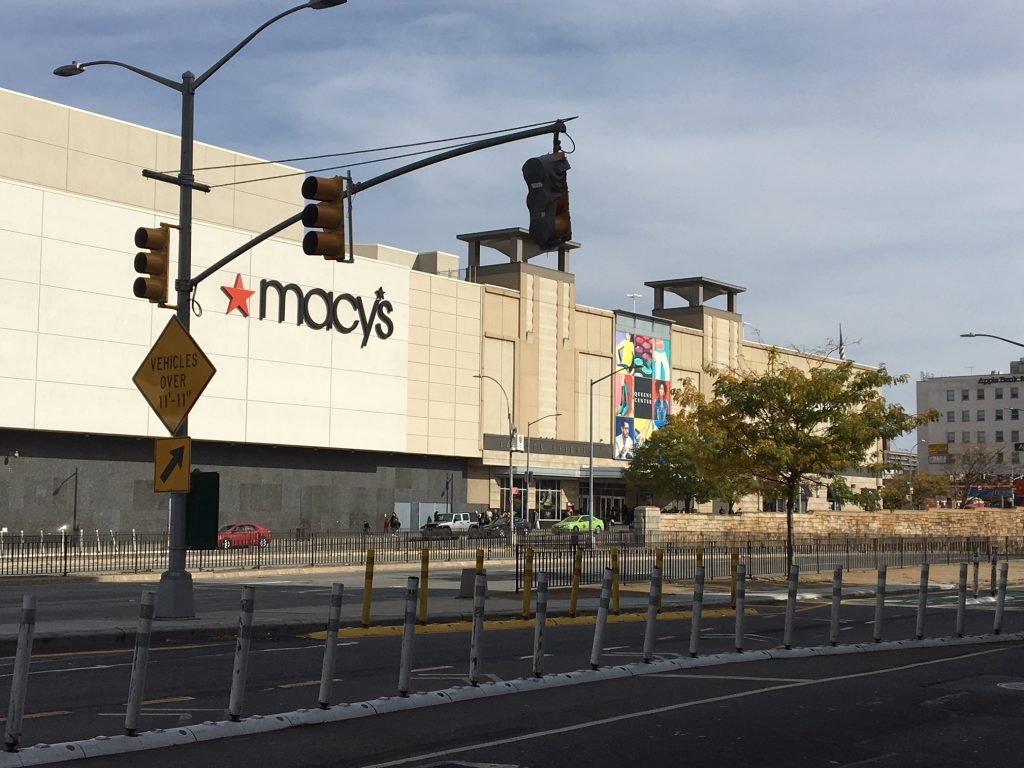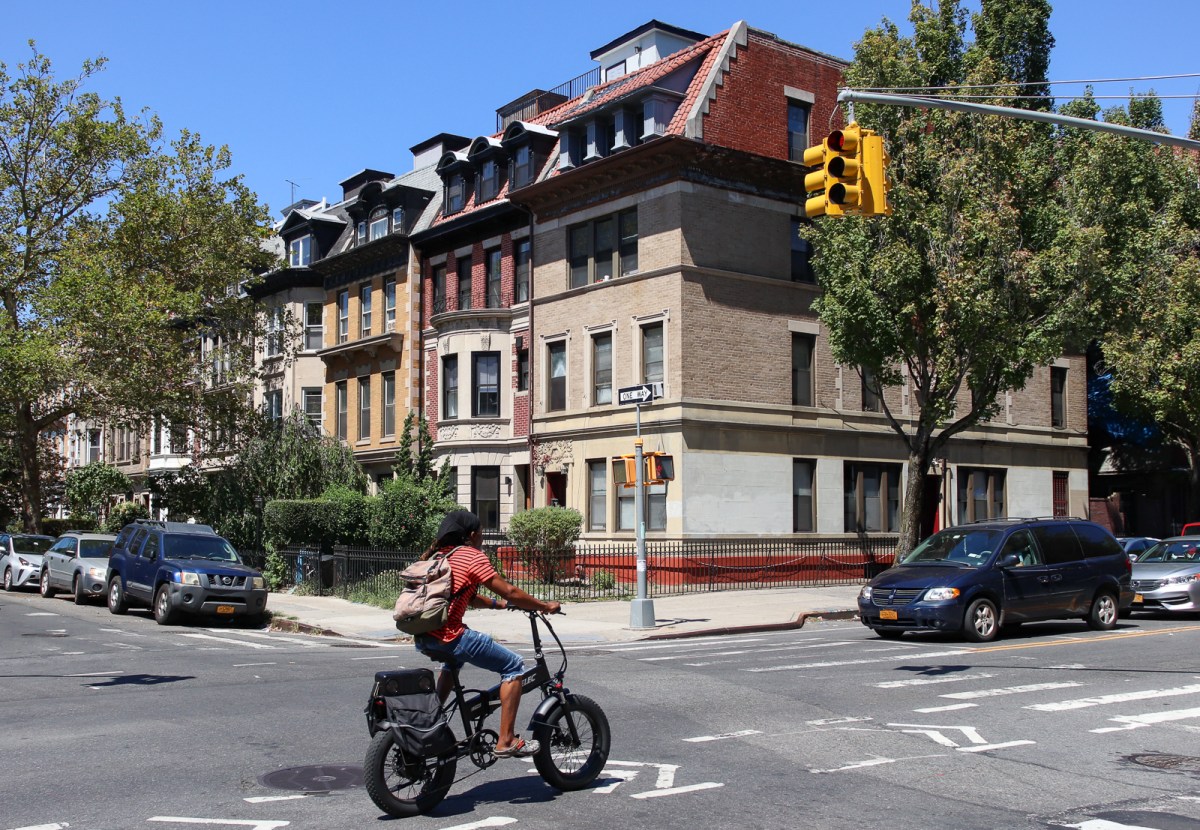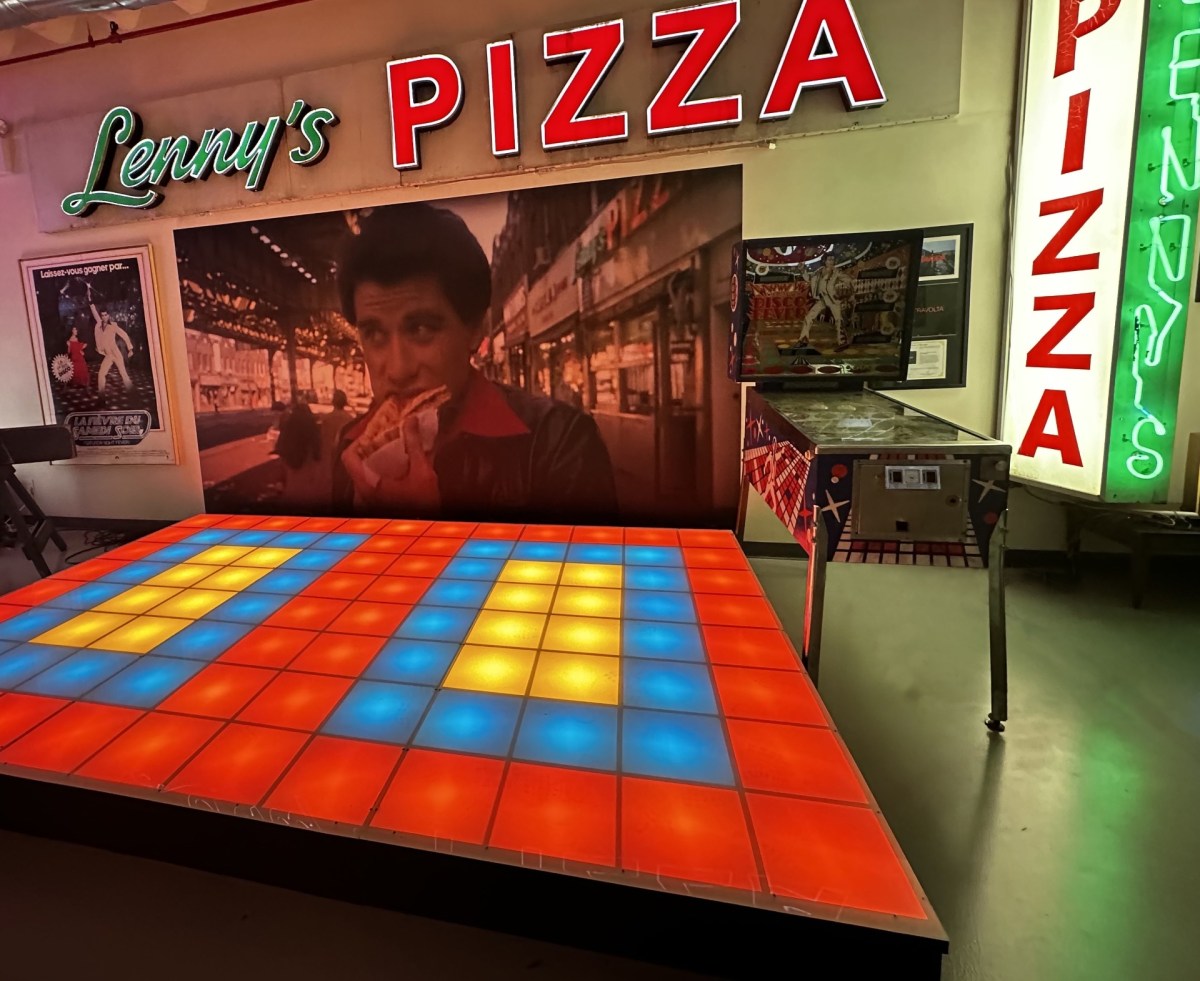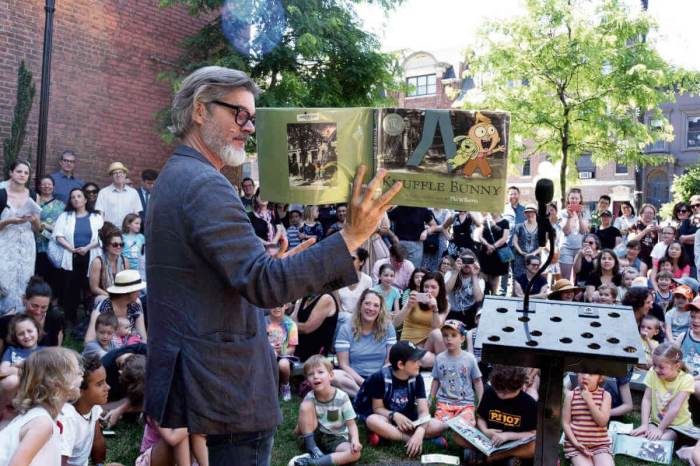By Jerry Tallmer
Musical romp is equal parts serious, satirical
Those fierce Washington Square warriors of the 1950s — Robert Moses, Jane Jacobs, and Shirley Hayes — were still the best part of a century from being born when, in 1811, Greenwich Village rose up against topographical conformity with the rest of New York City.
The Great Grid Protest of 1811!
Ever heard of it? I hadn’t until last week when getting acquainted with a new little show, “The Greenwich Village Follies.” Almost new. It was inspired by a “Greenwich Village Follies” of 1922 that starred Martha Graham. This new one is subtitled “A Musical Romp Through the History and Culture of Greenwich Village,” with a lot of just that being packed into its brisk, gabby 80 minutes.
The Great Grid Protest of 1811, for instance.
Officialdom had come up with the brilliant and quite logical idea of making directions and addresses easier for everyone by superimposing a horizontal/vertical street grid upon the entirety of Manhattan Island (starting at Houston Street and working north).
“What this meant was the Village would have to be bulldozed” — once bulldozers had been invented, that is — and all its twists and turns eliminated.
RESIST THE GRID (the four enthusiastic actors sing)
WE MUST RESIST THE GRID!
PROTECT YOUR FREEDOM FROM MUNICIPAL BARBARTY!
PROTECT OUR HISTORY, GEOGRAPHY, AND PROPERTY
FROM ARCHITECTURAL REGULARITY.
WE LIKE OUR TRIANGLES AND CURVES.
NO SQUARES IN THE VILLAGE!
WE MUST PROTECT OUR ARCHITECTURAL, HISTORICAL, AND CULTURAL IRREGULARITY…
Ah, there, Robert Moses!
No Squares in the Village
Ah, there, Norman Mailer!
If Martha Graham was one Greenwich Village luminary of the 1920s, so also, certainly, was the exquisite, hell-raising Edna St. Vincent Millay — who’s cherished today by the gay rights brigade as much for her bisexual pioneering as for her plays, her poetry, her acting at the Provincetown Playhouse on Washington Square, and her founding of the dramatically pregnant little Cherry Lane Theatre on Commerce Street.
These “Greenwich Village Follies” honors poet Millay by converting to song one of her lovelier fragments. The first stanza:
Love, if I weep it will not matter.
And if you laugh I shall not care.
Foolish am I to think about it,
But it is good to feel you there
And then there was the night in 1917 that Marcel Duchamp and a few if his surreal confréres broke into the interior of the Washington Arch, climbed to the top and, suitably hydrated, set up a picnic supper to celebrate the founding of the Free and Independent Republic of Greenwich Village.
Nobody knew how to get them down.
I hate to have to let the creators of “The Greenwich Village Follies” of 2009 know this, but John Wilcock wrote that gossip item in his Village Square column in The Village Voice of more than 50 years ago.
Ah there, John, wherever you are.
The three creators of “The Greenwich Village Follies” of 2009 are Fran Kirmser (the producer who came up with the idea of making something new of those 1922 “Follies”); Andrew Frank (a Villager who works for the New York City Department of Cultural Affairs); and Doug Silver (a musician, music teacher, and vocal coach who lives in Astoria and grew up with Frank as teenagers on Long Island 20 years ago).
It is Frank who directs the show, and Silver who plays piano and guitar during it. “I wrote the book,” says Frank. “Doug does the lyrics, and we collaborate on the music. But I have a lot to say on the lyrics, and Doug has a lot to say on the book.”
The actors pitch in too — during workshops, rehearsals, improvs, anytime. There are four of them, but the one with the greatest name — her own wonderful name, Charlie Parker — just got another gig and is no longer with the company. So the cast now consists of Patti Goettlicher, John-Andrew Morrison, Rollie Winkler, and Jody Beck.
“There’s a certain on-the-fly nature of the whole show,” says Andrew Frank, who was the founder, and for five years the artistic director of the 50-seat Manhattan Theatre Source — one flight up over what was once Capezio’s Shoes — that now houses the show.
Almost everything in the charivari revolves around Washington Square, of course, and not all of it is fun and games.
In March 1911, the Triangle Shirtwaist Factory, a sweatshop on the seventh floor of a commercial building at the intersection of Greene and Washington Streets, just southeast of the Square, burst into flames, and some 148 garment workers, many of them very young immigrant women, were either wiped out by fire and smoke — the bosses had locked the doors — or, in eerie premonition of a terrible day 90 years and seven months later, leapt to their deaths on the sidewalks below as a horrified New York watched.
EVERYONE STOPPED
AND EVERYONE LOOKED
AND EVERYONE CRIED WHEN THE FIRST WOMAN FELL
AND THEN MORE BODIES CAME DOWN
(FELL TO THE GROUND)
FROM THE FACTORY ON OUR CORNER
(FROM THE WINDOWS)
THEY LEAPT FROM THE WINDOWS, SEVEN STOREYS,
RIGHT OVER THERE…
RIGHT OVER THERE (ON GREENE STREET)
Offsetting that and other serious notes is a goodly share of rather sophomoric sexual humor, especially a long dissertation on the use and pleasures of The Dildo, and an even more sophomoric sexual reading into the drip-and-smear attacks on a canvas by the late Jackson Pollock. The proclamation: “This show is intended for mature audiences!!!” may be as much a come-on as a warning.
I was, in any case, more amused than I should have been by the appearance of Sneed, the smoke dealer of the northwest corner of Washington Square Park:
“Y’needany? Y’needany? Y’needany? Hey man. Smoke smoke. Hey man. Smoke smoke.”
The northwest corner of the park is where there was also once a Hanging Tree looming up over what was then Potter’s Field. The public burial ground. I think it is still there, that huge tall many-branched Hanging Tree, though I couldn’t tell you if it’s an elm or a maple or what the hell.
I only know that it was under that tree, in that corner of the park, where I relished my first taste, and inhalation, and impact of Smoke smoke — and suddenly understood all the ramifications and greatness of Wordsworth’s Intimations of Immortality — splendour in the grass, glory in the flower, yes oh yes.
Greenwich Village folly indeed. Geography is history, as they say, in “The Greenwich Village Follies” of 2009.
